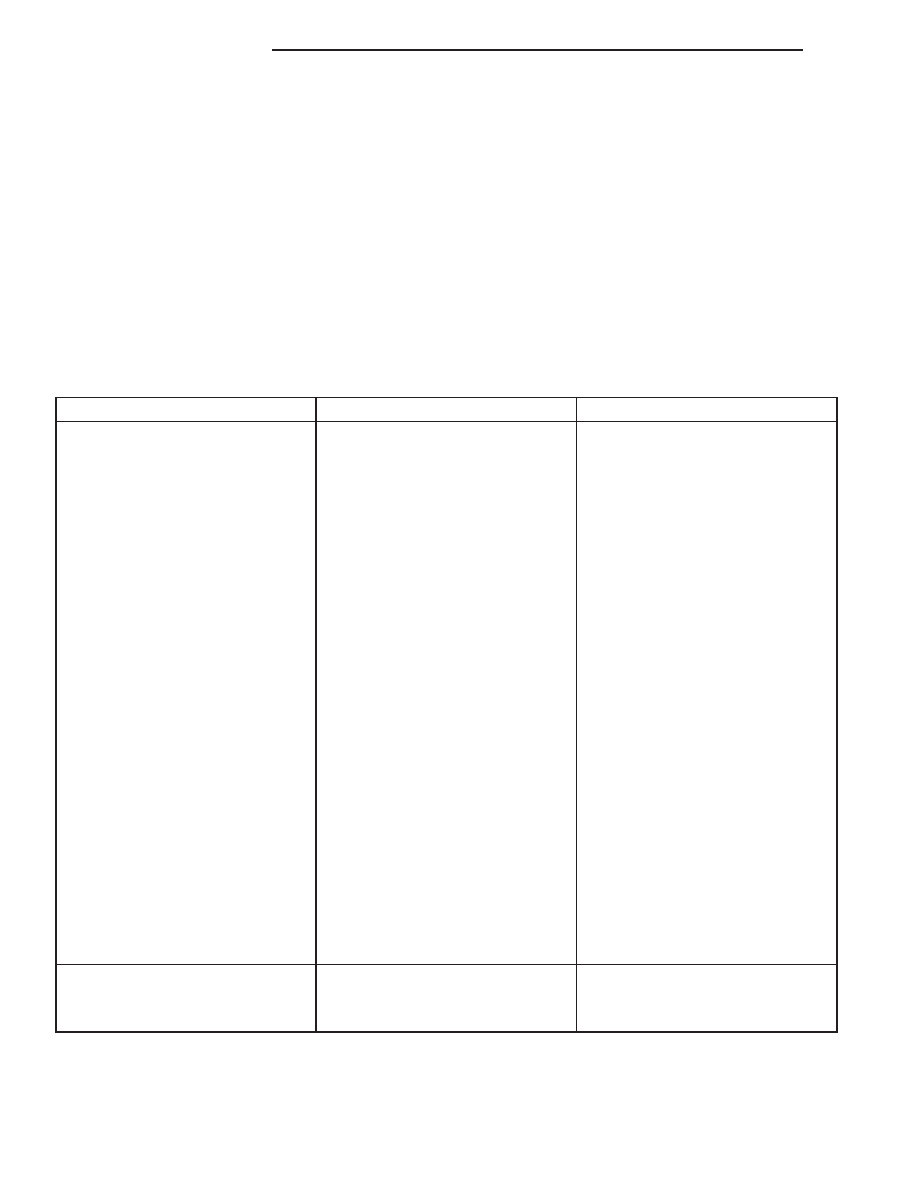Dodge Dakota (ND). Manual - part 868

The gasoline engine exhaust system consists of engine exhaust manifolds, exhaust pipes , catalytic converter(s) (1),
extension pipe (if needed), exhaust heat shields, muffler (4) and exhaust tailpipe (5).
The exhaust system must be properly aligned to prevent stress, leakage and body contact. Minimum clearance
between any exhaust component and the body or frame is 25.4 mm (1.0 in.). If the system contacts any body panel,
it may amplify objectionable noises from the engine or body.
OPERATION
The exhaust system channels exhaust gases from the engine and away from the vehicle.
DIAGNOSIS AND TESTING
EXHAUST SYSTEM
EXHAUST SYSTEM DIAGNOSIS CHART
CONDITION
POSSIBLE CAUSE
CORRECTION
EXCESSIVE EXHAUST NOISE
1. Leaks at pipe joints.
1. Tighten clamps to specified
torque at leaking joints (Refer to 11
- EXHAUST SYSTEM -
SPECIFICATIONS).
2. Burned or blown out muffler.
2. Replace muffler assembly (Refer
to 11 - EXHAUST SYSTEM/
MUFFLER - REMOVAL). Check
exhaust system.
3. Burned or rusted-out exhaust
pipe.
3. Replace exhaust pipe (Refer to
11 - EXHAUST SYSTEM/EXHAUST
PIPE - REMOVAL).
4. Exhaust pipe leaking at manifold
flange.
4. Tighten connection attaching nuts
(Refer to 11 - EXHAUST SYSTEM -
SPECIFICATIONS).
5. Exhaust manifold cracked or
broken.
5. Replace exhaust manifold (Refer
to 9 - ENGINE/MANIFOLDS/
EXHAUST MANIFOLD -
REMOVAL).
6. Leak between exhaust manifold
and cylinder head.
6. Tighten exhaust manifold to
cylinder head stud nuts or bolts
(Refer to 9 - ENGINE -
SPECIFICATIONS).
7. Restriction in muffler or tailpipe.
7. Remove restriction, if possible.
Replace muffler or tailpipe, as
necessary.
8. Exhaust system contacting body
or chassis.
8. Re-align exhaust system to clear
surrounding components.
LEAKING EXHAUST GASES
1. Leaks at pipe joints.
1. Tighten/replace clamps at leaking
joints (Refer to 11 - EXHAUST
SYSTEM - SPECIFICATIONS).
11 - 2
EXHAUST SYSTEM
ND